Comments / Questions (9)
![]() Tina Borup wrote:
Tina Borup wrote:
Strikker str 7/8 år \r\nHar strikket sadel skulderen og skal nu til at tage ud til ærmerne \r\nI følge opskriften skal arbejdet måle 6 cm\r\nMit måler 9 på midten. \r\nHvad har jeg misforstået \r\nMed venlig hilsen Tina
20.02.2025 - 17:56
![]() Pff wrote:
Pff wrote:
Wat een plezierig patroon! Vooral omdat je de lengte goed kunt bepalen, als de trui gepast wordt!
26.09.2024 - 19:25
![]() Irina Junkermann wrote:
Irina Junkermann wrote:
Hallo, gibt es eine Video zur Sattelschulterzunahme? Schoene Grueße
14.03.2024 - 20:07DROPS Design answered:
Liebe Frau Junkermann, dieses Video zeigt, wie man für die Sattelschulter zunimmt. Unter Tab "Videos" oben am Kopfteil finden Sie noch mehr passenden Videos. Viel Spaß beim Stricken!
15.03.2024 - 08:22
![]() Fanny wrote:
Fanny wrote:
Bonjour ! Lors de l'augmentation empiècement, il est indiqué qu'on augmente au total de 8 mailles à chaque rang d'augmentation. En comptant au fur et à mesure, j'arrive à 6... Erreur ? Merci !
10.11.2023 - 13:59DROPS Design answered:
Bonjour Fanny, on doit augmenter 8 mailles pour l'empiècement: 2 mailles pour chaque manche + 2 mailles pour le dos + 2 mailles pour le devant (= 1 maille de chaque côté du marqueur). Vérifiez bien votre nombre d'augmentations pour tomber juste. Bon tricot!
10.11.2023 - 14:15
![]() Anne wrote:
Anne wrote:
Bonjour, Le bas des manches est très large encore plus avec l'augmentation de 6 mailles. J'ai recommencé en réduisant de 6 mailles. C'est mieux mais encore large. Il n'y a pas d"erreur ?
03.12.2022 - 16:05DROPS Design answered:
Bonjour Anne, les mesures correspondent à celles utilisées habituellement, vérifiez bien votre tension avant de changer d'aiguilles et utilisez des aiguilles plus fines pour les côtes ou bien augmentez moins si besoin. Bon tricot!
12.12.2022 - 15:29
![]() Chris wrote:
Chris wrote:
Bonjour, pourquoi le nombre de mailles à monter sous les manches n’est-il pas le même à droite +8 mailles en 14 ans) qu’à gauche (+7 mailles)? Merci
20.02.2022 - 12:29DROPS Design answered:
Bonjour Chris, c'est une erreur, merci de l'avoir relevée, on doit bien monter le même nombre de mailles pour les 2 manches, soit 8 dans votre taille. Bon tricot!
21.02.2022 - 10:46
![]() EMANUELA wrote:
EMANUELA wrote:
Buongiorno, sto facendo il modello per mio figlio, una precisazione: nelle MANICHE, quando devo riprendere le maglie sospese devo usare i ferri n. 5 e non 4 come indicato....giusto? Alla fine, per i polsi, passo ai ferri n. 4.....
07.01.2022 - 14:31DROPS Design answered:
Buonasera Emanuela, grazie per la segnalazione: abbiamo corretto il testo e inviato la segnalazione al settore design. Buon lavoro!
07.01.2022 - 16:45
![]() Małgorzata Świątkowska wrote:
Małgorzata Świątkowska wrote:
Dzień dobry, czy rozmiar drutów należy rozumieć w milimetrach? Które z drutów Drops Pro Romance mają wg wzoru zostać tu użyte?
01.01.2022 - 20:22DROPS Design answered:
Witaj Małgorzato, rozmiary drutów są podawane w mm. Nie musisz kupować całego zestawu, wystarczą druty z żyłką nr 4 i 5 o dł. 80 cm. Możesz na nich również wykonać wykończenie dekoltu czy mankiety korzystając z techniki magic loop TUTAJ lub użyć drutów pończoszniczych. Pozdrawiamy!
01.01.2022 - 23:13
![]() Charlene wrote:
Charlene wrote:
I just had fun making this sweater for my grandson for Christmas. Your directions were easy to understand and follow. I look forward to making more sweaters from your designs for my other grandchildren. Thank you!
28.10.2021 - 23:04
Outdoor Adventure#outdooradventuresweater |
|||||||||||||
 |
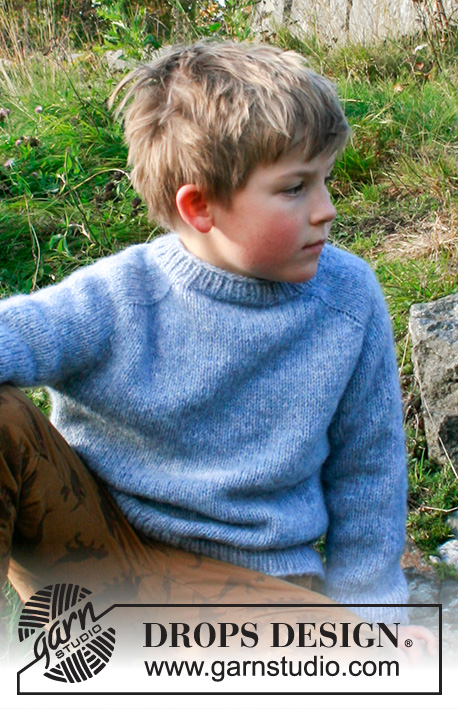 |
||||||||||||
Knitted jumper for children in DROPS Air. The piece is worked top down, with saddle shoulders. Sizes 3 - 14 years.
DROPS Children 40-19 |
|||||||||||||
|
------------------------------------------------------- EXPLANATIONS FOR THE PATTERN: ------------------------------------------------------- INCREASE TIP-1 (evenly spaced): To work out how to increase evenly, count the total number of stitches on the needle (e.g. 62 stitches) and divide by the number of increases to be made (e.g. 10) = 6.2. In this example, increase by making 1 yarn over after approx. each 6th stitch. On the next round work the yarn overs twisted to avoid holes. INCREASE TIP-2 (for saddle shoulders, sleeves and yoke): BEFORE MARKER: The new stitch twists to the right. Use the left needle to pick up the strand between 2 stitches from the previous round, pick up the back strand and knit in the front loop. AFTER MARKER: The new stitch twists to the left. Use the left needle to pick up the strand between 2 stitches from the previous round, pick up the front strand and knit in the back loop. DECREASE TIP (for sleeves): Start 3 stitches before the marker thread, knit 2 together, knit 2 (the marker thread sits in the middle of these 2 stitches), slip 1 stitch as if to knit, knit 1 and pass the slipped stitch over (2 stitches decreased). CASTING-OFF TIP: To avoid the cast-off edge being tight you can cast off with a larger size needle. If the edge is still tight, make 1 yarn over after approx. each 6th stitch at the same time as casting off; the yarn overs are cast off as normal stitches. ------------------------------------------------------- START THE PIECE HERE: ------------------------------------------------------- JUMPER – SHORT OVERVIEW OF THE PIECE: The neck and yoke are worked in the round with circular needle, from mid-back and top down. Stitches are increased for the saddle shoulders, then for the sleeves and finally for the yoke. The yoke is divided for the body and sleeves and the body continued in the round. The sleeves are worked in the round with double pointed needles/short circular needle, top down. NECK: Cast on 62-62-66-66-70-70 stitches with circular needle size 4 mm and Air. Knit 1 round, then work rib (knit 1, purl 1) for 3 cm. When the rib is finished, knit 1 round where you increase 10 stitches evenly spaced – read INCREASE TIP-1 = 72-72-76-76-80-80 stitches. Knit 1 round. Change to circular needle size 5 mm and work the yoke as described below. YOKE: Insert a marker at the beginning of the round (= mid-back) – THE YOKE IS MEASURED FROM HERE! In addition insert 4 other markers, without working the stitches, as follows – each marker is inserted between 2 stitches, is used when increasing for the saddle shoulders and should have a different colour to the marker on the neck. Marker 1: Starting mid-back, count 12-12-11-11-12-12 stitches (= half back piece), insert marker before the next stitch. Marker 2: Count 12-12-16-16-16-16 stitches from marker 1 (= shoulder), insert marker before the next stitch. Marker 3: Count 24-24-22-22-24-24 stitches from marker 2 (= front piece), insert marker before the next stitch. Marker 4: Count 12-12-16-16-16-16 stitches from marker 3 (= shoulder), insert marker before the next stitch. There are 12-12-11-11-12-12 stitches left on the back piece after marker 4. Allow the 4 markers to follow your work onwards. SADDLE-SHOULDER INCREASES: Read the whole section before continuing! Continue with stocking stitch. AT THE SAME TIME, on the first round increase 4 stitches for the shoulders as follows: Increase BEFORE markers 1 and 3 and AFTER markers 2 and 4 – read INCREASE TIP-2. You are only increasing on the front and back pieces, the number of shoulder stitches remains the same. Increase like this every round, a total of 10-12-14-16-18-20 times = 112-120-132-140-152-160 stitches. REMEMBER THE KNITTING TENSION! After the last increase the piece measures approx. 4-5-6-7-8-9 cm from the marker mid-back. Now increase for the sleeves as follows. SLEEVE INCREASES: Continue with stocking stitch. AT THE SAME TIME on the next round increase 4 stitches for the sleeves as follows: Increase AFTER markers 1 and 3 and BEFORE markers 2 and 4. You increase only on the sleeves and the number of stitches on the front and back pieces remains the same. The new stitches are worked in stocking stitch. Increase like this every 2nd round a total of 8-9-8-9-11-13 times = 144-156-164-176-196-212 stitches. The piece measures approx. 11-12-13-15-18-21 cm from the marker mid-back. YOKE INCREASES: Now increase on each side of all 4 markers as follows: Work until there is 1 stitch left before markers 1 and 3, increase 1 stitch, work 1 stitch, move the marker to the right needle and increase 1 stitch after the marker. Work to markers 2 and 4, increase 1 stitch before the marker, move the marker to the right needle, work 1 stitch and increase 1 stitch after the marker (= a total of 8 stitches increased on the round). You are now increasing on the front/back pieces and on the sleeves. Increase like this every 2nd round a total of 4-4-4-3-2-1 times = 176-188-196-200-212-220 stitches. When all the increases are finished, the piece measures approx. 15-17-17-18-20-22 cm from the neck. If the piece is shorter than this, continue working, without further increases, to the correct measurement. Now divide the yoke for the body and sleeves as follows: Work the first 26-28-29-30-32-33 stitches (= half back piece), place the next 36-38-40-40-42-44 stitches on 1 thread for the sleeve, cast on 6-6-6-8-8-8 new stitches (= in side under sleeve), work the next 52-56-58-60-64-66 stitches (= front piece), place the next 36-38-40-40-42-44 stitches on 1 thread for the sleeve, cast on 6-6-6-8-8-8 new stitches (= in side under sleeve), work the last 26-28-29-30-32-33 stitches (= half back piece). The body and sleeves are finished separately. THE PIECE IS NOW MEASURED FROM HERE. BODY: = 116-124-128-136-144-148 stitches. Continue with stocking stitch in the round until the piece measures 14-16-19-22-22-22 cm from the division. There is approx. 4 cm left to finished length; try the jumper on and work to desired length. Work 1 round where you increase 24-26-26-28-30-30 stitches evenly spaced – remember INCREASE TIP-1 = 140-150-154-164-174-178 stitches. NOTE: This is done to avoid the rib being tight. Change to circular needle size 4 mm. Work rib (knit 1, purl 1) for 4 cm. Cast off with knit over knit and purl over purl – read CASTING-OFF TIP! The jumper measures approx. 36-40-44-48-50-52 cm from the shoulder down. SLEEVES: Place the 36-38-40-40-42-44 stitches from the thread on the one side of the piece on double pointed needles/short circular needle size 5 mm and knit up 1 stitch in each of the 6-6-6-8-8-8 stitches cast on under the sleeve = 42-44-46-48-50-52 stitches. Insert a marker thread in the middle of the 6-6-6-8-8-8 new stitches under the sleeve. Start at the marker thread and work stocking stitch in the round. When the sleeve measures 3 cm from the division, decrease 2 stitches mid-under the sleeve – read DECREASE TIP. Decrease like this every 5-6-7-8-9-11 cm a total of 4 times in all sizes = 34-36-38-40-42-44 stitches. Continue working without further decreases until the sleeve measures 20-23-28-32-35-38 cm from the division. There is approx. 4 cm left to finished length; try the jumper on and work to desired length. Knit 1 round where you increase 6 stitches evenly spaced = 40-42-44-46-48-50 stitches. Change to double pointed needles size 4 mm and work rib (knit 1, purl 1) for 4 cm. Cast off with knit over knit and purl over purl – remember CASTING-OFF TIP! The sleeve measures approx. 24-27-32-36-39-42 cm from the division. Work the other sleeve in the same way. |
|||||||||||||
Diagram explanations |
|||||||||||||
|
|||||||||||||
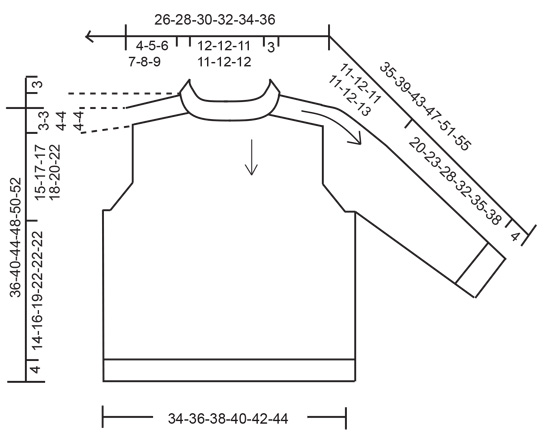
|
|||||||||||||
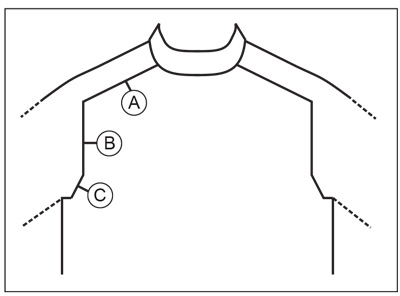
|
|||||||||||||
Have you finished this pattern?Tag your pictures with #dropspattern #outdooradventuresweater or submit them to the #dropsfan gallery. Do you need help with this pattern?You'll find 29 tutorial videos, a Comments/Questions area and more by visiting the pattern on garnstudio.com. © 1982-2025 DROPS Design A/S. We reserve all rights. This document, including all its sub-sections, has copyrights. Read more about what you can do with our patterns at the bottom of each pattern on our site. |
|||||||||||||







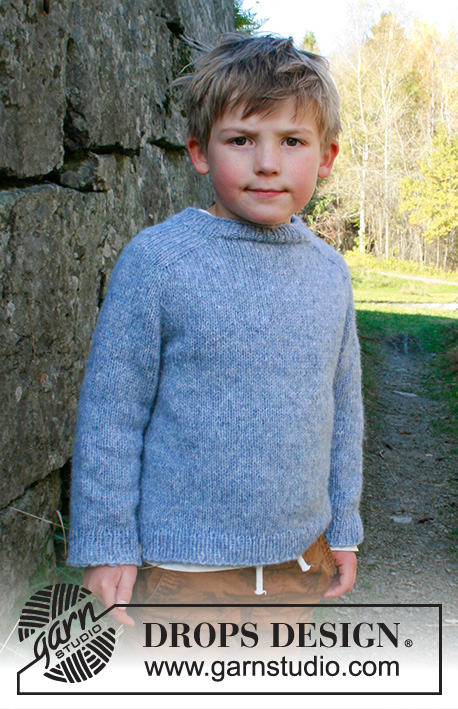
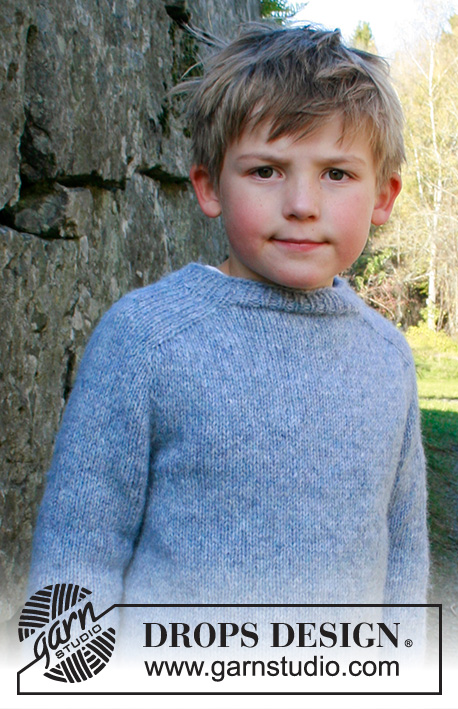

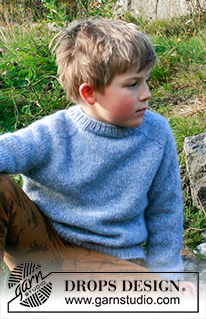
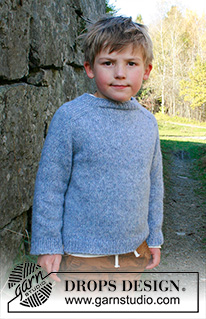
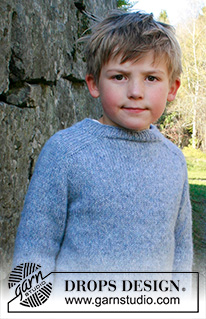






























































Post a comment to pattern DROPS Children 40-19
We would love to hear what you have to say about this pattern!
If you want to leave a question, please make sure you select the correct category in the form below, to speed up the answering process. Required fields are marked *.